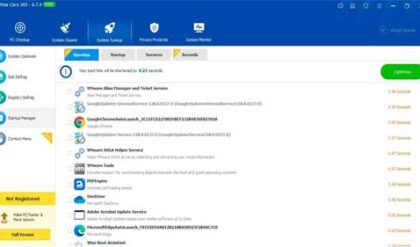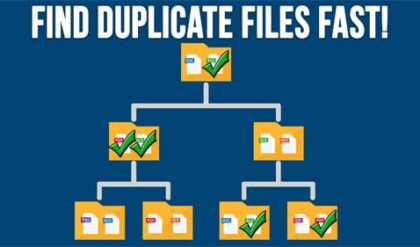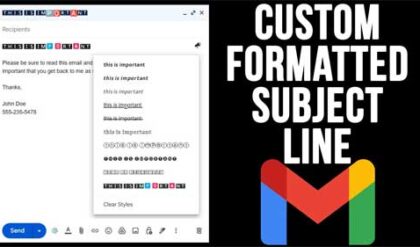
A company’s website represents its digital storefront and hub, driving brand awareness, customer acquisition, and revenue growth. Often, businesses need to pay more attention to foundational website design best practices, sabotaging outcomes. Methodically planning conversion-focused sites, understanding nuances like visual hierarchy, user psychology, and responsive behaviors, and partnering with reputable web designers manifests distinguishing presences conveying quality and trust while compelling desired actions.
Why Website Design Matters
Strategic designing a website targeting measurable business objectives impacts five essential areas:
First Impressions
Visually appealing interfaces signal professional legitimacy, making positive, memorable first impressions. Well-organized navigation and content flows telegraph competence, building confidence in capabilities. Design directly fuels perception.
Brand Identity
Consistent branding through logos, fonts, color schemes, and image styles strengthens recognition, cementing differentiated positioning in consumers’ minds. It uniquely ties websites to organizations’ values and offerings coherently.
User Experience (UX)
Simplifying tasks through intuitive workflows minimizes confusion, keeping audiences engaged. Meeting user motivations and streamlining key actions enhances stickiness and conversions, funneling customers towards milestones.
Search Engine Optimization (SEO)
Optimized page architecture, metadata, and content allow search algorithms to better understand context, ranking sites higher for relevant keyword searches. This expands discovery by target segments.
Conversions
Strategically designed user flows remove friction, guiding visitors through preferred conversion funnels tailored to service offerings or products sold. Design purposefulness aims for more on-site actions.
Proper planning and design implementation fundamentally fuels online business success. Yet where do savvy owners even start crafting differentiated presences?
Planning Your Website Design
Converting digital blueprints begins with five planning pillars when designing a website for your business:
Define Your Target Audience
Analyze ideal customer groups’ demographics, behaviors, motivations, and pain points. Design elements then specifically appeal to resonate with values and address struggles better, conveying websites built for them.
Set Your Website Goals
Outline key objectives, whether raising awareness, generating leads, or directly selling. Allow goals to guide how site architecture funnels users down conversion pathways. Measure against targets to quantify performance.
Identify Your Competitors
Research both direct competitors’ online presences and those successfully engaging similar audiences. This analysis pinpoints effective and lacking elements to integrate or avoid when blueprinting differentiated experiences.
Content Strategy
An outlined content plan seeds sites with informative pages intrinsically valuable to users that also interlink, building SEO authority. Blogs, videos, and tools speak to pains in solving problems. Strong content pulls visitors deeper regularly.
Budget Considerations
Weigh available budgets when deciding on custom designs, copywriting needs, and photography. Balance beauty with pragmatism, allocating for central features that have the highest business impact. Plan in phases, placing must-haves before nice-to-haves. Even simple sites generate results if calibrated for conversions.
Design Principles for a Conversion-Oriented Website
Tactical design techniques guide visitors towards desired actions through:
Visual Hierarchy
Accentuate calls to action using high-contrast colors, strategic white space, and proportional sizing while deemphasizing peripheral items that want less attention. Hierarchy manipulates eyes sequentially.
Navigation
Simplify site-wide navigation and page-level content organization structured around user tasks, segmented topics, and processes. Intuitive flow keeps engagement focused on priorities rather than losing interest.
Content Layout
Spatial alignment, formatting, and concise digestible sequencing directs scanning, keeping momentum engaged down pages towards key messaging and value propositions convincing visitors.
Responsive Design
Mobile-first build priorities adapts sites fluidly across multiple device sizes by strategically stacking elements appropriately as screen widths shift. This prevents jarring experiences deterring return visits.
Mobile Optimization
Beyond responsiveness, some interfaces feature entirely separate mobile designs focusing on navigation, content structure, and calls-to-action tailored for thumb reachability and quicker consumption patterns winning mobile users.
While robust strategies and tactical frameworks provide blueprints, manifesting desires still require the technical talents of capable web designers.
Delving into the Website Design Process
When designing a website involves discovery, definition, development, and delivery where:
Discovery Phase
Design partners first seek to clearly understand business goals, target user perspectives, and brand identities through questions revealing priorities, differentiators, and success measures. This alignment preempts misguided efforts.
Project Framing
Initial plans outline the scope, functional specifications, and content integration strategy. Iterative conceptual sketches establish design direction. Client feedback refines approaches to staying brief.
Development Scheduling
Dedicated project managers carve required development items into staged sprints for systematic chipaways balanced across assigned internal teams. Tentative timelines map progress.
Quality Assurance Steps
Comprehensive testing protocols verify positive user experiences at each milestone, check responsiveness and performance, handle unexpected input, and prevent defects before they ever hamper consumers.
Launch Support
Following launches, designers train internal administrators to manage sites while providing ongoing maintenance services and helping optimize based on real performance data to reach KPI targets. Teams become self-sufficient.
Factors When Hiring a Reputable Website Designer
Vetting a reputable web designer to trust with manifesting an impactful online presence requires evaluating capabilities across five indicators of excellence:
Proven Portfolios
The most critical indicator comes from assessing previous client work, showcasing the quality and complexity of solutions designed. Strong portfolios will feature attractive designs aligned with specific business types, resonating visually with your target user groups. Look for a clear display of technical competencies, translating plans into dynamic functional realities across required components like custom illustrations, integrated databases, and e-commerce. Real work sells skills best.
Specialized Expertise
Some agencies establish superior competencies specifically serving certain business niches like the medical field, higher education, or tech startups. Others specialize across e-commerce sites, complex content management systems, or multi-funnel conversion optimization flows superior to generalists. Carefully scan the types of past projects and note specializations matching desired needs rather than assuming any designer suffices. Identifying specialty areas avoids misaligned partnerships.
Collaborative Approach
Design lives as a collaborative process between client visions and designer expertise. Explore initial discovery calls and alignment meetings to set expectations, followed by how the feedback and revision cycles operate, allowing clients to weigh preferred solutions. Strong listening skills and creative problem-solving with an openness to explore multiple directions predict positive, responsive partnerships flourishing over the years beyond single projects.
Ongoing Support Process
While launching sites makes for exciting milestones, the need for helping manage future content updates, reporting evolving analytics insights, and quickly fixing unavoidable bugs continues growing reliance on designers’ ongoing support. Savvy partners pledge stabilized systems with intuitive administrative options, so internal teams sustain self-sufficiency. Evaluate what post-launch services get extended so needs avoid ballooning through neglect.
Client Testimonials
While claims from the agencies themselves sound convincing, insightful third-party testimonials communicate accessible and high-value engagement styles, exuding quality designs that meet business needs. Peruse genuine client commentaries highlighting reputable working partnerships flourishing through organizations’ expansions. Constructive vouches should detail specific technical capabilities plus measurable business growth from collaborative solutions. Satisfied client voices speak loudest, qualifying capable experts worth hiring.
With skyrocketing competition across every industry, designing a website
for business must strategically convert visitors into customers by uniquely resonating with target user motivations around design, content, and digital experiences. Finding the perfect website design partner proves foundational to reaching online goals by first scrutinizing these five indicators that predict whether relationships manifest success.
Conclusion
A strategically designed website uniquely positioned to motivate target users while elegantly guiding them through conversion funnels is foundational for online business revenue growth and distinction. Yet realizing full potential requires upfront planning and commitment to framework optimization. With the help of reputable web designers skillfully translating visions into user-centric digital experiences, essential foundations are built. From first impressions through conversions, meticulous design facilitates achievements one visit at a time






